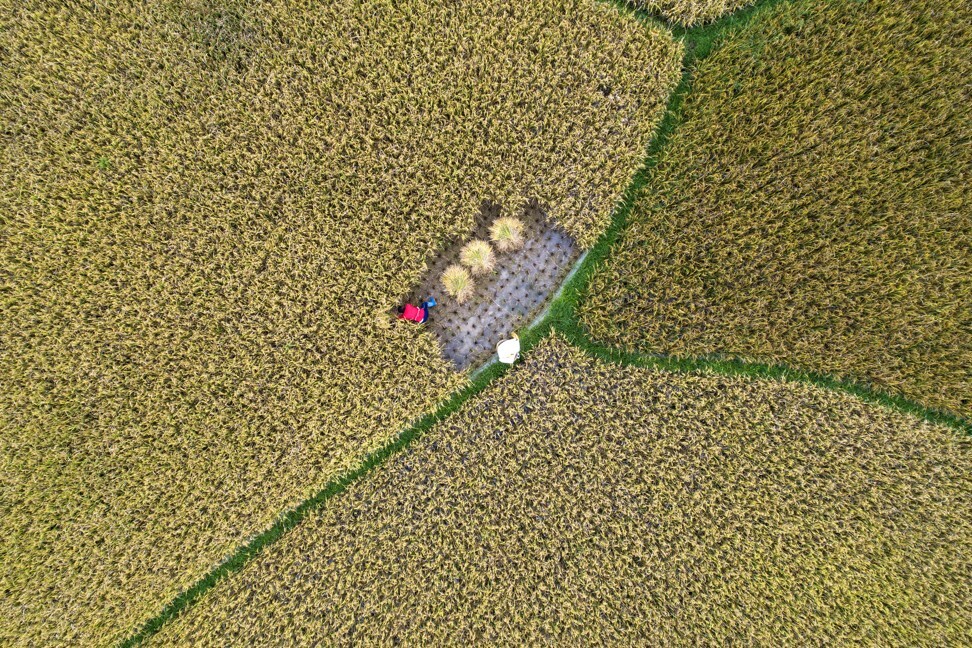
World’s cities doubled in land use over 20 years, with America leading urban sprawl, study finds
- The rural-urban divide is a cause of global inequality, but both excessive density and the drive for lower density can be detrimental
- Cities in Europe, Africa and South America were hemmed in by limits on either space or finances
The collective size of cities more than doubled over the past two decades in an unequal pace of expansion across the globe, according to a new study by Chinese researchers.
Measurements based on satellite images suggest the total size of urban areas increased from nearly 240,000 sq km (92,700 square miles) in the year 2000 to almost 520,000 sq km (200,000 square miles) in 2020.
North American cities had the fastest rate of expansion at 3,921 sq km per year.
“The urban expansion in South America (16,600 sq km total), Africa (22,500), and Oceania (3,200) represented low amounts in the past 20 years,” said the research team in a paper published in Science Bulletin on Tuesday.
The team was led by Dr Kuang Wenhui of the Institute of the Geographic Sciences and Natural Resources Research at the Chinese Academy of Sciences in Beijing
What are Xi Jinping’s thoughts on urbanisation in China?
But tracking the ever changing boundaries of one nation’s cities can be challenging, let alone measuring changes occurring around the world.
“There was an enormous amount of data on a global scale,” Kuang told the South China Morning Post on Wednesday.
Existing tools for automated processing were relatively inaccurate, he said. And there were conflicting opinions on what kind of landscape should be counted as urban.
“On the most intensive days, more than 100 scientists and graduate students were working on the project. Some earliest efforts started over a decade ago,” he said.
Kuang and his colleagues developed a new tool with big-data technology to define the boundaries of a city. But some cases needed manual verification. They achieved more than 90 per cent overall accuracy, according to the paper.
The huge expansion of cities in North America could be driven by several factors, according to Kuang. The United States and Canada had a huge amount of land with relatively small population densities. People sought to improve their quality of life by acquiring more living space. Intensive use of vehicles also caused cities to extend outwards.
‘Heartbroken’ rural residents decry China’s local government evictions
Dr Xu Jiangang, a professor at the school of architecture and urban planning at Nanjing University, said the findings of Kuang and his team were “incredible”.
“China has used more than half of the world’s cement,” he said.
“The urban areas in the US may have ultra low population density and lots of green space. In China there may be a lot more concrete. It remains questionable if we can define them as the same thing,” Xu said. “How can the Americans possibly beat the Chinese in this [urbanisation] race?”

Kuang said several factors might have reined in the expansion of Chinese cities.
China must maintain enough farmland to ensure food security for its population and the annual growth of urban land was limited by the government’s planning, which has been tightened significantly in recent years to protect the environment.
“China is not following the Americans’ big footprints,” Kuang said.
The study also pointed to serious inequality between countries. An average American citizen enjoys over 400 square metres of urban land – more than four times that of people in low-income countries, according to the researchers.
Urban expansion in Europe as well as Latin American and African countries was relatively slow. Europe, as home of the world’s first modern cities, did not have much room remaining for large-scale developments, Kuang said.
In some low-income countries, urban expansion could have been hampered by the already small size of cities, lack of resources and investment or inadequate planning by local governments, the researchers said.
While high population density could harm a resident’s quality of life, allowing the use of too much land would lead to precious resources being wasted, Kuang said.
“This is a dilemma challenging every city planner today,” he said.

